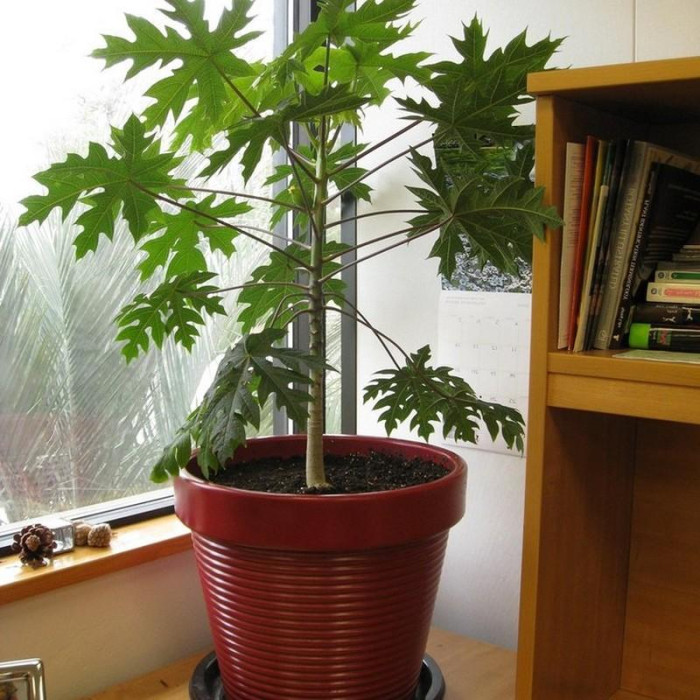Papaya, papaw, or pawpaw / Carica papaya
This is an evergreen exotic plant, also known as melon or breadfruit. The natural habitat of papaya is tropical countries.
Its main value is delicious fruits that are eaten raw, peeled from the skin and seeds. Unripe fruits are also used:
- in stews;
- curry;
- salads.
The composition of the fetus includes a large amount of papain and proteins. Baked papaya takes on the smell of bread, which is why it got its second name. When picking fruit, you should be careful, as the plant secretes a thick juice that causes allergies. The alkaloids found in fruits are also dangerous in large doses.
Papaya fruits have an average diameter of 10–30 cm and a length of 15–30 cm. Unripe fruits are green in color, the flesh is hard, in mature ones the skin is amber to yellow, the flesh is orange with a pink tinge, soft and juicy.
The most common way to eat papaya is raw, peeled, without seeds. And also baked on fire (in this form, papaya emits a strong bready aroma, which is why it is called "breadfruit"). Unripe fruits are used in salads, cooked in curries or served stewed as a side dish.
Papaya contains enzymes that can break down proteins. This property of the fruit was used by the Indians of South America and the use of papaya in pharmacology is based on it. It is extremely useful for people with poor digestion to eat this fruit. The pulp of the fruit has a bactericidal and anti-inflammatory effect.
The optimum temperature regime is from 20° to 25°C. Universal fertilized soil is recommended. Moderate regular watering is suitable, which should be reduced in winter.

No questions about this product, be the first and ask your question.





















